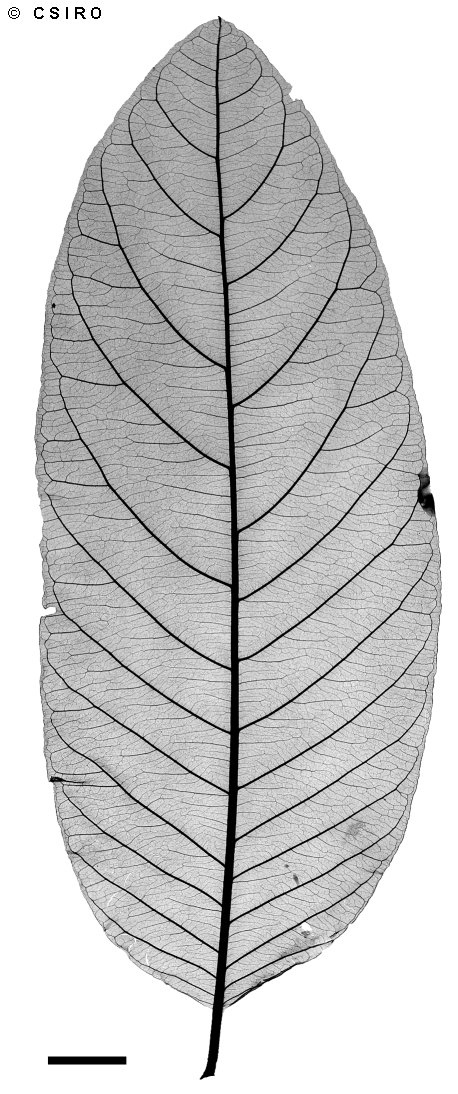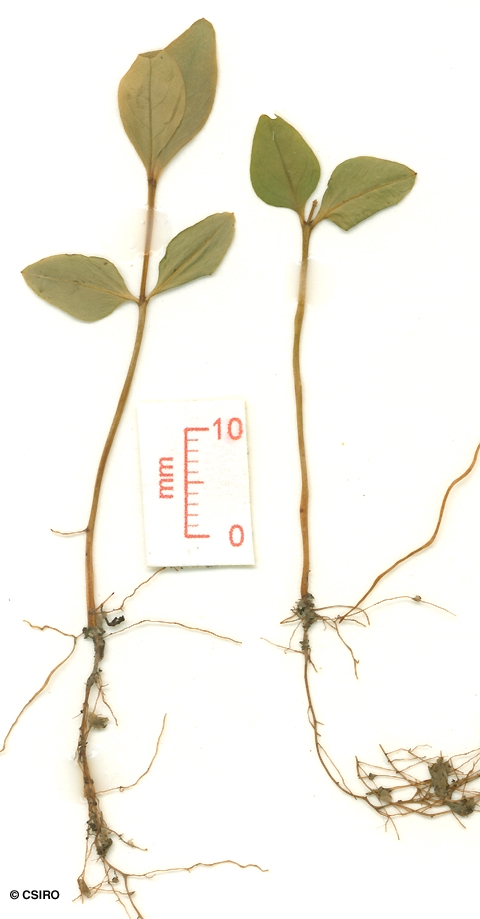Australian Tropical Rainforest Plants - Online edition
Psidium guajava L.





Linnaeus, C. von (1753) Species Plantarum 2: 470. Type: Habitat in India. Probably cultivated, originally from tropical America.
Guava; Common Guava; Guava, Common
A small tree with a smooth brownish bark.
Calyx closed at the bud stage, splitting into about 4-6 lobes when the flower opens. Calyx lobes green on the outside but cream on the inner surface. Calyx tube (hypanthium) + lobes about 17 x 8 mm at the flower bud stage. Petals about 15-20 x 10-11 mm.
Cotyledons ovate, about 7-10 mm long with a short mucro at the apex. Oil dots small, visible with a lens, more numerous about the margin. At the tenth leaf stage: leaf blade elliptic, apex obtuse or mucronate, base cuneate, upper surface glabrous; oil dots small and numerous, visible with a lens; petioles glabrous, often reddish. Seed germination time 19 days.
An introduced species, originally from Central America, widely cultivated in Australia and now naturalised in NEQ, CEQ and many other places in Queensland and north-eastern New South Wales. Altitudinal range in NEQ from sea level to 750 m. Grows as an understory tree in rain forest regrowth on a variety of sites but is probably more frequently encountered on the coastal lowlands.
Fruits eaten by Crimson Rosellas and Cassowaries. Cooper & Cooper (1994).
This introduced species is widely cultivated through out the wet tropics. Sometimes forming dense thickets along roads and regrowth areas of rain forest.
This species may have medicinal properties. (http://squid2.laughingsquid.net/hosts/herbweb.com /herbage/A21796.htm)





